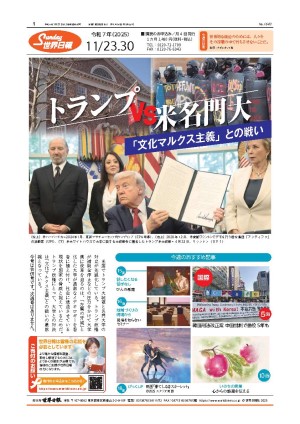米軍のアジア再均衡は「不十分」との報告書/Pentagon’s Asia rebalance ‘may be insufficient’ for U.S. and allied security, report says
国防総省の支援を受けて作成された報告によると、米国の政策と軍事力をアジアに向けようという取り組みは、中国のハイテク兵器の増加と中東の不安定化で行き詰まっている。
戦略国際問題研究所(CSIS)が作成した報告は「軍事的に、太平洋軍はリバランス(再均衡)を完全に受け入れたが、接近阻止の課題は悪化しており、リスクを克服する中国の能力は予想以上だ」としている。
アジアへの再均衡は、この地域での米国と同盟国の利益を守るには「不十分のようだ」と報告は結論付けている。
報告は「中国と北朝鮮は常に、米国の安全保障への関与に対抗してきた。現状の米国の能力開発の速度では、この地域の軍事バランスは米国が目指すものとは逆の方向に向かう。再均衡には大規模な資金供給が必要だ」としている。
報告は、再均衡戦略の定義を一つにまとめ上げることに失敗したとオバマ政権を批判している。CSISの専門家委員会が質問した政府当局者らは、再均衡戦略について「混乱」があることを認め、その実施に関して懸念を抱いていた。
報告は、アジアでの軍事プレゼンスを拡大し、アジア諸国、とりわけ北東アジアの国々の間での米軍の方針に関する不安を緩和することを求めている。
「中国の人民解放軍の接近阻止・領域拒否能力は、かつては台湾向けだけのものだと思われていたが、第二列島線の外側にまで急速に拡大し、その影響を受ける米国の同盟国、友好国も増えている。米国領であるグアムも影響を受けている」
中国は列島線戦略で、中国沿岸から、日本から東南アジアにかけての2本の列島線まで支配と影響力を拡大することを目指している。
中国の急速な軍備増強は、米国をアジアの外に押し出すためのものだ。新型の潜水艦、艦船、対艦ミサイル、サイバー戦、宇宙戦兵器も作られている。
米軍は中国の兵器に対抗する能力を備える必要もある。具体的には、中国の対艦ミサイル、地対地弾道ミサイルへの対抗策を作成する必要がある。
報告は「実験の文化を定着させ、政策を短期間で展開できるようにし、発達型長距離ミサイルを開発し、画期的なミサイル防衛コンセプトに予算を出し、現地での航空戦部隊を増やし、海中で優位性を握り、宇宙・サイバー・電子戦能力を強化することを勧告する」と記している。
空母の開発など中国海軍の拡大は、領有権を争う南シナ海を「事実上の中国の湖」にする危険性があると報告は指摘した。
中国海軍専門家はこの報告を批判した。中国の海軍情報技術諮問委員会の委員長、尹卓氏は香港紙、東方日報で、報告は米国の軍事産業を強化することを目指していると主張した。尹氏は、南シナ海に展開している米軍機は、中国ではなく地域への脅威となっていると語っている。
中国外務省報道官、華春瑩氏は今週、南シナ海の中国の人工島に対する米国の批判を拒否した。埋め立てて作った人工島には、軍事施設が建設されている。
華氏は「このような不合理な批判は受け入れられない」と語った。
(1月27日付)
A Pentagon-sponsored study has found that efforts to refocus U.S. policies and forces on Asian security are faltering because of an increase in Chinese high-technology weapons and instability in the Middle East.
“Militarily, the Pacific Command has fully embraced the rebalance, but the anti-access challenge is worsening and China’s tolerance for risk has exceeded most expectations,” said the report by the Center for Strategic and International Studies.
The report concludes that the Asia rebalance “may be insufficient” to secure U.S. and allied interests in the region.
“Chinese and North Korean actions are routinely challenging the credibility of U.S. security commitments, and at the current rate of U.S. capability development, the balance of military power in the region is shifting against the United States,” the study said. “Robust funding is needed to implement the rebalance.”
The Obama administration is faulted in the report for failing to provide a single, agreed-upon definition of the U.S. rebalancing strategy. Administration officials questioned by a CSIS panel of experts found “confusion” about the strategy and concern about implementation.
The study urged expanding the military presence in Asia to ease fears among states in Asia about U.S. force posture, especially in Northeast Asia.
“The Chinese People’s Liberation Army’s anti-access/area denial capabilities that many once viewed as Taiwan-specific are rapidly expanding to the Second Island Chain and beyond, affecting not only an increasing number of U.S. allies and partners, but also U.S. territories such as Guam,” the report said.
China’s island-chain strategy calls for expanding power and influence farther from Chinese shores through two island chains stretching from Japan through Southeast Asia.
China has been rapidly building up its forces designed to push the U.S. military out of Asia. The buildup includes new submarines, warships, anti-ship missiles, and cyberwarfare and space warfare weapons.
The U.S. military also needs to develop new military capabilities to counter Chinese weapons. Specifically, the Pentagon needs to develop counters to Chinese anti-ship and surface-to-surface ballistic missiles.
“We recommend institutionalizing a culture of experimentation; encouraging rapid platform evolution; developing advanced long-range missiles; funding innovative missile defense concepts; fielding additional air combat systems; exploiting the U.S. undersea advantage; and augmenting space, cyber, and electronic warfare capabilities,” the report said.
China’s naval expansion, including aircraft carriers, risks turning the contested South China Sea into “virtually a Chinese lake,” the report said.
A Chinese military expert criticized the report. Yin Zhuo, director of China’s Navy Information Technology Advisory Committee, told the Hong Kong news outlet Tung Fang Jih Pao that the report was the designed to bolster the U.S. military and defense industry. Mr. Yin stated that U.S. military aircraft operating in the South China Sea pose greater threats to the region than does China.
Chinese Foreign Ministry spokeswoman Hua Chunying this week rejected U.S. criticism of Chinese island-building in the South China Sea, where military facilities are being constructed on reclaimed territory.
“We do not accept such unreasonable criticism,” she said Tuesday.
January 27, 2016





